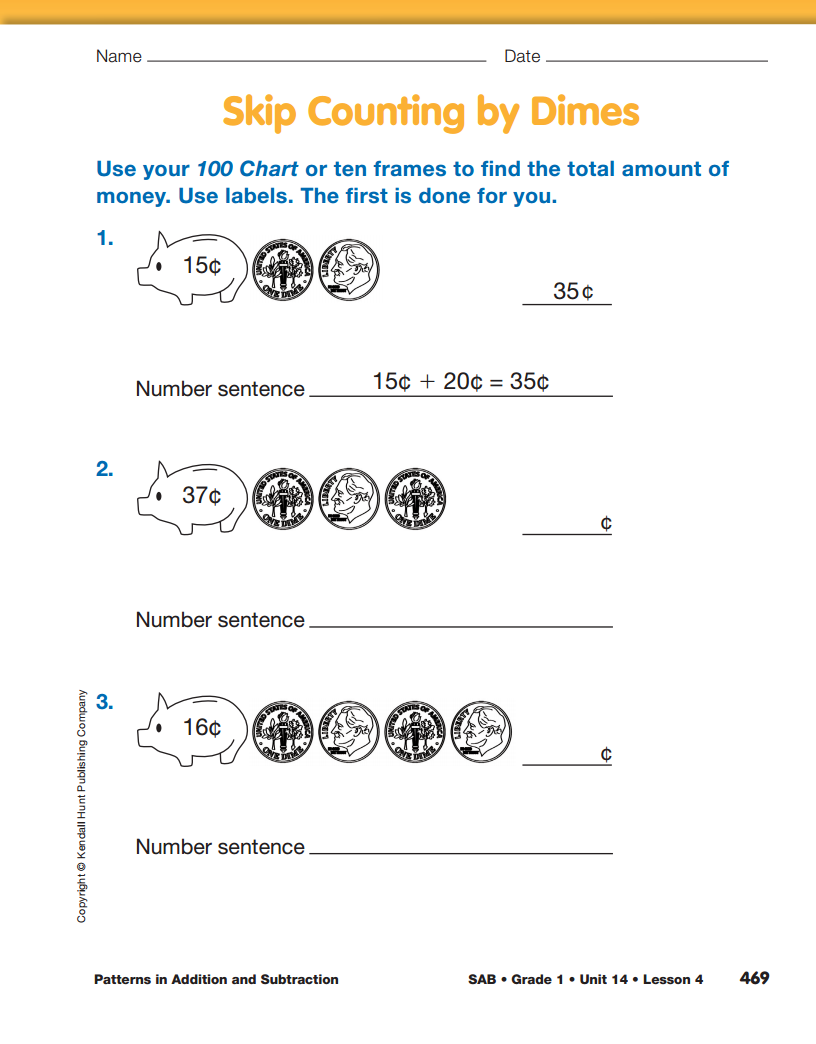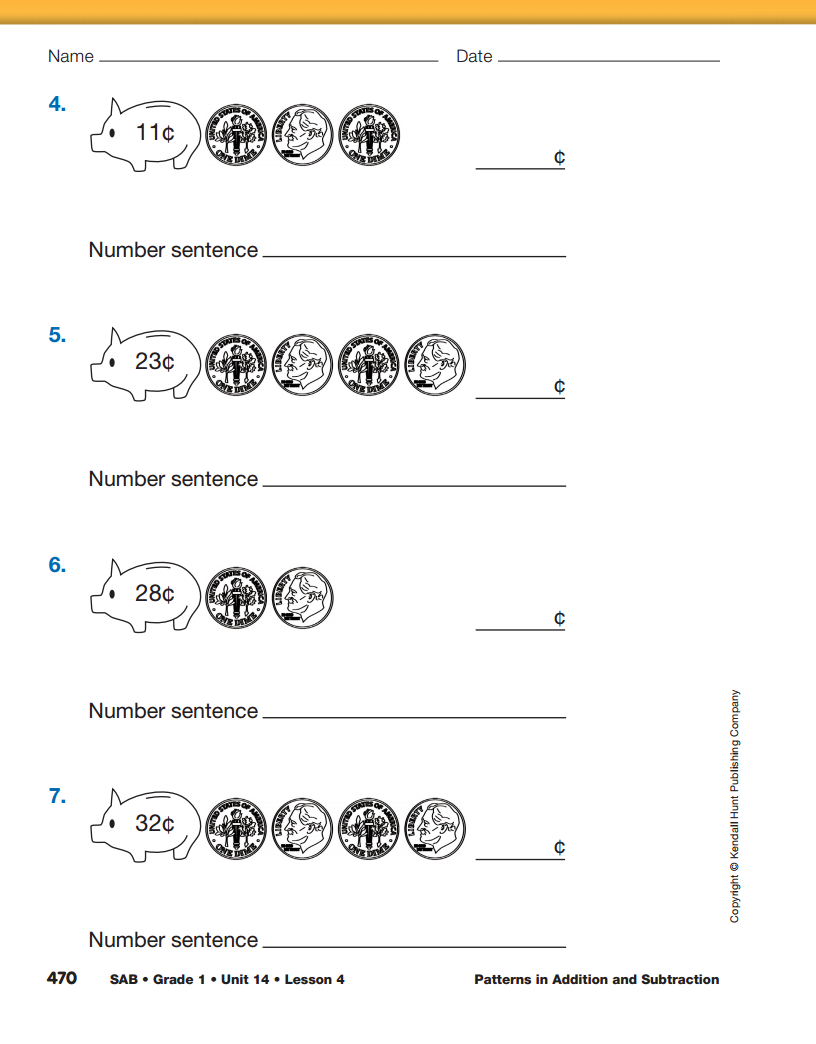Patterns in Addition and Subtraction
Est. Class Sessions: 2–3Developing the Lesson
Part 2: Adding Dimes
Direct students' attention to the 100 Chart page in the Student Activity Book Reference section. Display five dimes and ask students to find the value of the collection of coins. Ask a student to explain how he or she knew the value of the coins.
Then ask:
Use the display of the 100 Chart to demonstrate how
to skip count on the chart to add tens to a number
(e.g., 23 + 10, 23 + 20, 46 + 10).
Then place a nickel next to the dimes.
Ask:
Next, take away the coins and display three nickels and three pennies. Ask a student to tell the total. Have students locate the total, 18¢, on their 100 Chart.
Add one dime and ask:
Guide students to place their fingers on 18, then move below one row for each dime, counting along with you, 18, 28, 38, 48.
Ask:
Give the students a few more similar problems to solve, where the first number is not a multiple of ten and the second one is, such as 23¢ + 40¢, 14¢ + 20¢, etc. Have them count by tens using the 100 Chart. Discuss the patterns they see.
Assign the Skip Counting by Dimes pages in the Student Activity Book. Students use the 100 Chart to solve the problems. Remind them to include the cents label in the number sentences so that it is clear what the numbers represent [MPE6].














